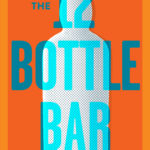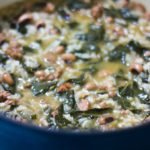Drinking beer with a meal is something like adding a condiment—you’re tinkering with the food. The results can either be harmonious, discordant, or a hash where the two don’t relate in a meaningful way. It’s no different for beer than chili sauce. One basic rule of thumb, then, is to match intensities. Chili sauce can easily overwhelm a dish, and so can intense beers like lambics or IPAs. The reverse is true, too; fiery or rich dishes require a beer that won’t taste like water by comparison.
Another handy rule of thumb is to think about the role the beer will play. Are you looking for the flavors to meld together and complement each other—roasted meat and a roasty beer—or act as a contrast, like a sweetly malty beer with a spicy enchilada? Some beers also help cut through richness or heat, or help cleanse the palate along the way. These three concepts are known as the “Three Cs.”
■ Complement. These are flavors that harmonize through similar elements. The sweetness of malts accentuates sweetness in meat; the herbal flavor of hops seasons herbal dishes.
■ Contrast. In good contrasting pairings, elements harmonize by putting each other into sharp relief. Roasted malts balance sweetness (think coffee and dessert); hop bitterness, by comparison, contrasts nicely with some sweeter meats. Sweetly malty beers contrast nicely with oil-and-vinegar dressings, and so on.
■ Cut (or Cleanse). One of the best uses for a beer is to cut through intense food flavors. When approaching rich food, hops, carbonation, and acidity are excellent tools. Acidity is also great at cutting saltiness.
Don’t forget to consider regional specialties and classic pairings. When beer and food come from the same place, they will often go hand in glove with one another. The smoky, rich meats of Bavaria are perfect with dunkel lagers; Flemish carbonnade is a triumph with tart Flanders ales; and the sweet and briny flavors in raw oysters are wonderful with roasty Irish stouts or charred porters.
Alcohol stimulates the appetite. As an aperitif, you want a beer that isn’t heavy and filling, and also one that won’t coat your tongue or wreck your palate. Dry, lightly bitter, effervescent, and acidic beers fit the bill, including fruit lambics or gueuzes, saisons, pilsners, and effervescent pale ales. You want the opposite when looking for a digestif—those beverages like brandy and Port that come after the meal. Here, too, certain styles are excellent, like barley wines, old ales, strong abbey ales, and doppelbocks. They are heavy, satiating, and alcoholic—a dessert unto themselves.
These few basics are a great foundation. To dig a little deeper and begin to get an intuitive sense of good pairings, it’s useful to consider the different elements of beer and cuisine. There are a few systems out there, and taken together, they can greatly improve your odds of making that perfect pairing.
For more help selecting beer, take Jeff’s “What Kind of Beer Would I Like Best?” quiz!
 The Beer Bible
The Beer Bible
by Jeff Alworth
Full of history, the art of tasting, backstories and anecdotes, appropriate glassware, bitterness units, mouthfeel, and more—it’s all here in The Beer Bible.
Divided into four major families—ales, lagers, wheat beers, and tart and wild ales—there’s everything a beer drinker wants to know about the hundreds of different authentic types of brews. Plus a primer on pairing beer and food using the three Cs— complement, contrast, or cut.
GET THE BOOK: Amazon | B&N | ebooks.com | Google Play | iBooks | Kobo | Workman Publishing





